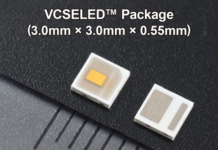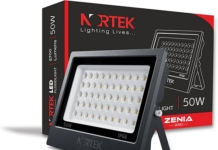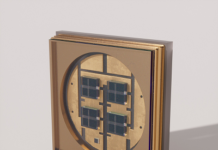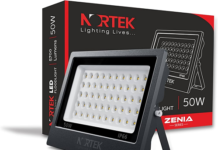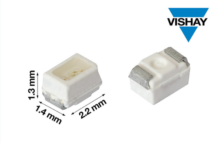
4 Important Steps To Follow When Customizing LED Lights
So, we’ve all noticed how fast LED lights have grown popular in homes and even in commercial spaces. Right? And they’re growing even more popular now that anyone can easily get customized LED lights.
Anyway, for those new to this – customization is the same as personalization. Basically, it’s the process of creating LED lighting solutions that meet all the lighting needs of one specific customer. Customization can be done in many ways including changing the shape, size, length, color, type of housing, functionality, and performance of an LED light.
The catch, here, is that all these new features and changes are determined by the customer but implemented by a manufacturer. And that’s why it’s important to get a manufacturer that will listen to you and is easy to work with.
Anyway, this post is all about guiding those who want custom-made LED solutions on how to do it right. To be clear, you don’t have to be an expert to do it. In fact, it could be a fun DIY project. So, here is a well-researched and carefully curated 4-step process:
1. First, Do a Feasibility Check
The first step to take in the process of making custom-made LED fixtures is to know whether the project is feasible. In this case, you have to consider two very important aspects; i.e.:
- The overall cost of making customized LED Light fixtures
- And the value they will add to your home, office, or business
a) Project Cost
You need to figure out how much capital is needed for such a project. More so, finding the right manufacturer can be a great way to mitigate over-expenditure and overall costs. So, take time to look around for a reputable supplier who will fulfill all your requirements.
Remember, the cost isn’t just what you’ll spend to get the fixtures made. It can also come in the form of new fitting installations and preparing your space for the new fixtures. Therefore, consider various aspects of your space. For example, plan your electrical wiring and power load. That way you’ll know the number, length, size, and shape of lights you need.
And, if you are importing, don’t forget to inquire about your country’s fees, policies, and guidelines. That includes ensuring that the products you are importing are allowed in your country. Lastly, ensure you calculate the cost of shipping and come up with an efficient plan in case of delays.
b) Value/Returns
Generally, a feasible project is something that either adds value or increases profits. And that’s why you should determine how much value/profits you stand to gain from your new custom LED lights.
Note that while profits are mostly monetary, value can come in many ways. For instance, customized LED lights can increase the value and aesthetic appeal of your residential home or commercial space. They can also build your brand’s reputation.
Anyway, once you are sure that your customized LED light project is feasible, you can move on to the next step.
2. Come Up with a Design
Before approaching a manufacturer, it’s important to figure out the design you want. Here, you can either come up with a design from scratch or borrow a few ideas from existing ones. Luckily, there are a variety of designs you can find online, in magazines, in workshops, and in lighting brochures.
Now, one thing to note is that design is heavily dependent on what you want to achieve. If your customization is aesthetically motivated, then a lot of focus will go into the exterior design. However, if you want better-performing fixtures, most of the resources you put in will go into redesigning and reengineering the fixture’s interior components.
In general, here are a few things that come into play during the design phase:
a) Wattage
During your feasibility check, figuring out the wattage or electrical wiring setup was a major part of the process. Obviously, the last thing you want is to overload your wiring system because the new customized fixtures use more power than what is supplied.
So, in this step, the main agenda is to decide the exact wattage you want your fixture to have. And it should be compatible with your space’s voltage ratings. But if you are unable to determine that, you can seek guidance from the manufacturer or an LED expert.
b) Lumen Output
Lumen Output is derived from the wattage. In simple terms, it’s the number of lumens you get per watt. Therefore, lumen output will be determined by your wattage calculations. Note that modern LED lights can yield up to 200 lumens per watt.
Therefore, you can use the wattage to determine how bright the fixtures will be or your preferred lumen output to determine the most ideal wattage for your fixture.
c) The Purpose of Your Customized LED Lights
What will they be used for? What do you intend to achieve through these lights? Where are you going to use them? And so on… Once you know this, you can now decide on a suitable design for your custom LED lights.
For instance, a fixture that’s meant for exterior lighting needs to be waterproof, weather-resistant, and not susceptible to corrosion.
d) Additional Features…?
Yes, you should also decide if you want any features on your customized LED lights. This could be in the form of dimming, movement sensors, automatic switching, and so on. In fact, modern LED fixtures come with advanced, smart features for added convenience and security.
This includes things like wireless connectivity, video recording, sound recording, live streaming, voice playback, and so much more. And with the right manufacturer by your side, it becomes so easy to personalize these features or create new ones.
e) Light Color
Let’s face it. Light color has the power to change a room’s mood in an instant. That’s why it’s always important to choose colors wisely.
Pro Tip – for a workspace environment, go with cool temperature, bright light. But if it’s meant for a relaxation area, a dimmer, warm temperature light will be most ideal.
3. Determine Performance Specifications
After coming up with a design, the next step is to determine the specifications you want your customized LED lights to have. For example, do you want your customized LED lights to be dimmable or not?
Also, depending on where your fixture will be used, you can decide whether it will be water and weatherproof, or shockproof. For instance, if you want custom LED street lights, they need to be weatherproof.
Choosing suitable specifications always goes a long way in improving fixture performance and durability. And, in more ways than one, these specs will depend on your customized LED lights’ intended use. Take color, for example. It will be determined by the mood you want to invoke or the type of installation space.
4. Find a Reputable, Trustworthy, and Capable Manufacturer
Now, the last and most important step in creating customized LED lights is finding the right manufacturer for the job. Note that there are hundreds of companies that offer customization services. But not all of them guarantee high levels of professionalism and skills.
You wouldn’t want to bet on the wrong horse, would you? If so, you have to be prudent and very meticulous when shortlisting possible manufacturers. Check out their previous projects and contact two or three clients to get a feel of what it’s like working with the manufacturer.
If their service delivery track record shows promise, then you can give them a shot. In most cases, an experienced customized LED light manufacturer will walk you through the personalization process again; from feasibility to specifications. However, they’ll provide you with tips to help improve your design and light fixtures. And even better, their understanding can help you to know how to execute the project without spending more than is necessary. So, it will be a win-win for you.
In Conclusion
Evidently, creating the ideal customized LED fixture comes with its hurdles. But, unlike what most people say and think, it is not a hard or complex process. In fact, with the right bits of info, it is quite a straightforward and manageable procedure. And if you follow the four detailed steps above, you will surely succeed.
Remember, the more you know, the smoother and less costly the process will be. I cannot promise it will be entirely easy, but it will be smooth. Plus, you don’t have to do it alone. If you find these steps overwhelming, consider starting with step #4. Why? Because working with an experienced manufacturer like ShineLong helps to hasten and simplify the whole process.
Author Bio
Nat Huang is the Chief Marketing Officer for ShineLong, a Chinese manufacturer that specializes in providing LED Tri-Proof lights and commercial lighting solutions to its global customer base through an official website. Follow him on Twitter @imrNat.



